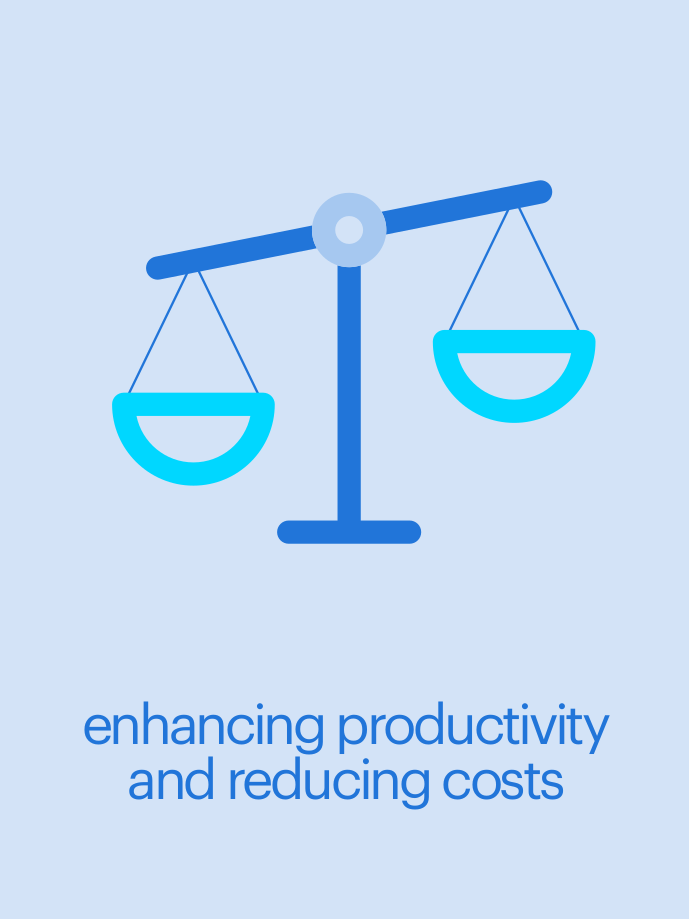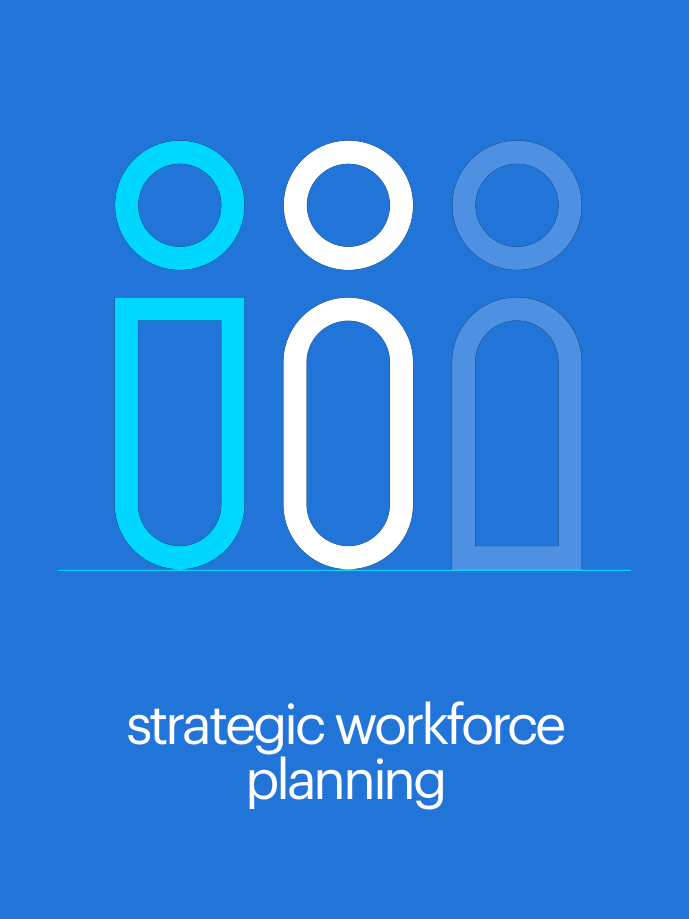attracting top talent
-
attract more candidates with these job posting dos and don’ts
In a context of shortage of qualified labor in Canada, it is crucial to write clear and detailed job offers to attract the right candidates. This article presents the results of our recent Ipsos survey, telling you what to avoid and what to include in your ads to stand out. You'll learn to avoid clichés that can discourage candidates and highlight the essential elements that Canadian job seekers are looking for, such as salary, location, company culture, and much more. Ready to transform your job postings to attract exceptional talent? Dive into the article to discover practical tips that will make all the difference!
read more -
attracting top talent: why upskilling is important
In today's ever-changing world of work, it is essential not to underestimate the importance of continuing education and upskilling. This article examines why these elements are crucial to business success and how they impact employee satisfaction and retention. By analyzing the results of our Randstad-Ipsos survey, we find that only a minority of Canadian workers say they are satisfied with the professional development opportunities offered by their employers. Discover the key elements of an effective upskilling program that employees are actively seeking, as well as the benefits that a culture focused on personal development can bring to your company. Dive into this article to see how investing in your current talent can propel your organization toward a prosperous and innovative future.
read more -
5 things great employers do to attract talented new grads
In an increasingly competitive job market, attracting and recruiting new graduates has become crucial to establishing a strong talent pipeline. This article examines the essential strategies for attracting Generation Z as they prepare to enter the workforce. Learn how adopting mobile policies, promoting social responsibility, modernizing your workspace, and providing an exceptional candidate experience can make a world of difference. Dive into this article to discover how these approaches can transform your company into an attractive and innovative employer!
read more -
discover the best way to hire software developers
Hiring IT professionals can be quite challenging, but recognizing the common hurdles is the first step to overcoming them. Our detailed guide explores these challenges, providing insights and solutions tailored to your business needs. From dealing with skills shortages and evaluating candidates to adapting to changing tech demands, we offer practical advice and strategies that help you connect with top talent effectively. Discover different hiring methods, learn about the benefits of collaborating with an HR expert like Randstad, and gain valuable insights into tech job trends. Are you ready to enhance your hiring process? Check out our guide for a deeper understanding and unlock the potential of your tech teams today!
read more -
how to write the perfect logistics job description
In a constantly evolving sector like logistics, attracting the best talent starts with an engaging job description. This article examines how to write descriptions that not only capture the attention of qualified candidates, but also reflect your company's values and opportunities. You'll learn how to avoid common mistakes, optimize your ads for today's digital world, and align your offerings with the expectations of workers in this dynamic industry. By following our practical advice, you will be well prepared to recruit effectively in a competitive job market. To discover these essential strategies and more, dive into our comprehensive guide!
read more -
how to write a manufacturing job description to help you find skilled talent
In this article, we look at the current recruitment challenges facing the manufacturing industry and how a well-written job description can be an effective tool for attracting the right talent. You will discover the main motivations of potential candidates in this sector, such as job security and professional development opportunities. Additionally, our guide offers practical techniques for improving your job descriptions, including a detailed example for the machine operator position. By better understanding what workers in the manufacturing industry are looking for today, you will be able to align your job offers with their expectations and thus contribute to the future success of your organization. Find out how to transform your recruitment process now!
read more -
boomers at work: still shaping the job market in the mid-2020s
In this article, we'll examine how the Baby Boomer generation is redefining the concept of retirement in 2024. While some choose to extend their careers or opt for part-time jobs, they continue to bring a wealth of skills and valuable experience in the job market. We will analyze the reasons for this trend, its implications for employers and the essential importance of succession planning to preserve organizational knowledge. Discover how these dynamics are transforming not only today's workplace, but also the future of work itself. Be inspired by the strategies proposed to create an inclusive and intergenerational environment that benefits everyone!
-
what does a multi-generational workforce actually want in a job offer?
In this article, we'll look at how to design job postings that meet the varied expectations of a multi-generational workforce. By taking into account the specific needs of each generation, from Gen Z to Baby Boomers, you can develop inclusive and effective recruiting strategies. Find out how to integrate flexibility, job security, professional development and social responsibility into your offerings to attract the best talent. Dive into our guide to learn how to build a respectful and inclusive company culture that values generational diversity.
read more
retaining and engaging employees
-
employee retention strategies for manufacturing: how to keep your best workers
In this article, we look at key strategies for retaining employees in the manufacturing sector. Faced with a global talent shortage, it is essential to retain the skilled workers already in place. We discuss why it's often better to retain your employees rather than replace them, and we offer practical tips for improving your retention rates. From flexible schedules to optimizing training programs to working with an HR solutions partner, learn how to create a positive work environment that encourages your top talent to stay. To delve deeper into these effective strategies and transform your approach to human resources, explore our complete guide!
read more -
8 reasons why you’re losing employees — and how to keep them
In an ever-changing job market, understanding why your employees choose to leave is crucial to maintaining a strong, engaged team. This article examines the main reasons for talent loss, ranging from uncompetitive compensation to a lack of advancement opportunities. Discover how poor management practices or a misaligned company culture can cause your best people to leave, and learn how to create an environment where they feel valued and supported. By highlighting concrete strategies to improve retention, this article helps you strengthen your employer brand. Dive into our in-depth analysis to discover how to meet the expectations of Canadian workers and build a resilient team that grows with your organization.
read more -
how to improve employee retention: 7 actionable strategies
In this article, we'll look at key strategies for improving employee retention and decreasing turnover. Learn how building a strong company culture, offering flexible hours, offering meaningful work, and ensuring proper recognition can transform your work environment into a place where your talent wants to invest. We'll also discuss the importance of thorough training, effective management, and working with human resources experts to ensure your team stays engaged and motivated. Dive into our practical tips for building a thriving workforce that propels your business to lasting success.
read more -
the top causes of employee turnover and how to reduce it
Discover the main reasons for employee turnover and its impact on your business. In this article, we examine common causes of voluntary resignation, such as lack of professional development opportunities and lack of flexibility at work. We also offer concrete strategies to improve talent retention, such as implementing training programs and implementing flexible schedules. By understanding these dynamics, you can not only reduce your recruiting costs, but also create an environment where your best talent wants to stay and thrive. To find out more about these essential topics and discover how Randstad can support you in this process, immerse yourself in our comprehensive guide.
read more -
why a positive company culture matters
In a world where company culture is key to attracting and retaining talent, it's important to create a positive culture that engages your current employees while attracting new ones. A healthy work environment not only promotes employee engagement and loyalty, but also improves their productivity and efficiency. This translates into significant benefits for your business, both in terms of customer satisfaction and new customer acquisition. By positioning yourself as an innovative employer who values employee well-being and is committed to important social issues, you can strengthen your reputation while cultivating a high-performing team. To discover how to transform your organization through a positive corporate culture, our team of HR consultants is ready to support you in this rewarding process.
read more -
changing workplace ethics: a guide for modern companies
In a world where company culture is key to attracting and retaining talent, it's important to create a positive culture that engages your current employees while attracting new ones. A healthy work environment not only promotes employee engagement and loyalty, but also improves their productivity and efficiency. This translates into significant benefits for your business, both in terms of customer satisfaction and new customer acquisition. By positioning yourself as an innovative employer who values employee well-being and is committed to important social issues, you can strengthen your reputation while cultivating a high-performing team. To discover how to transform your organization through a positive corporate culture, our team of HR consultants is ready to support you in this rewarding process.
read more -
how to improve employee engagement and boost productivity
In a competitive job market, attracting and retaining top talent is crucial for any business. This article examines effective strategies for boosting employee engagement, a key component to improving recruitment, retention and productivity. Learn how to build strong leadership, foster open communication, establish robust company values, and create a culture of recognition. We also discuss the importance of investing in training and professional development, as well as maintaining a safe and productive work environment. Each section is packed with practical tips for transforming your workplace into a space where your employees feel valued and motivated to perform at their best. To learn more about these essential strategies and how they can benefit your organization, download our comprehensive guide now!
read more -
how well do you understand your employees’ work preferences?
Find out how flexible working hours can make your business an employer of choice. In this article, we examine the different types of flextime, such as telecommuting and compressed weeks, and their positive impact on talent retention and attracting new hires. You'll discover why offering these options is not only a benefit to your employees, but also an effective strategy to stay competitive in an ever-changing job market. Download our full case study to learn how some companies have overcome their recruiting challenges with flexible arrangements that drive engagement and productivity. Don't miss this opportunity to improve your HR strategy!
read more
enhancing productivity and reducing costs
-
9 signs your manufacturing team is struggling with low productivity
Productivity is crucial to the success of any manufacturing business, but it can sometimes be affected by subtle and often overlooked signs. In this article, we'll look at nine key indicators that could indicate a decline in productivity within your team. Whether it's through non-compliance with service level agreements or high absenteeism rates, each section offers practical advice and solutions to remedy the situation. By spotting these early warning signs, you can act proactively to improve operational efficiency and create a healthier, more engaging work environment. Find out how to turn these challenges into opportunities for continuous improvement by reading the full article!
read more -
how to boost productivity at your company: 5 tips
Enhancing productivity in the workplace can be achieved without compromising employee well-being. Our recent article delves into creative strategies that enable your team to work more efficiently. By utilizing mobile technology, optimizing meetings, and encouraging a healthy lifestyle, these suggestions aim to foster a balanced and effective work environment. Learn how investing in training and valuing the input of frontline staff can boost loyalty and productivity. Check out our article for practical insights that can reshape your company's productivity approach while ensuring a supportive environment for your employees.
read more -
why increasing employee productivity makes financial sense
Discover how to improve employee productivity without spending a fortune with effective strategies. This article examines four key practices to maximize your company’s effectiveness, starting with identifying engaged employees who align with your company culture. From motivating with competitive salaries to removing barriers to productivity, each step is designed to create a fun and high-performing work environment. With Randstad on your side, you can not only attract but also retain top talent to propel your company toward success. Explore this inspiring article and learn how we can help you turn your challenges into growth opportunities!
read more -
5 ways you’re hiking up the cost of an employee
Discover how to improve employee productivity without spending a fortune with effective strategies. This article examines four key practices to maximize your company’s efficiency, starting with identifying engaged employees who align with your company culture. From motivating with competitive salaries to removing barriers to productivity, each step is designed to create a fun and successful work environment. With Randstad on your side, you can not only attract but also retain the best talent to drive your business forward. Dive into this inspiring article and discover how we can help you turn your challenges into growth opportunities!
read more -
how to reduce hiring costs with randstad
Find out how to reduce your recruitment costs while boosting your productivity with effective strategies. In this article, we'll look at how an in-depth understanding of your business can uncover opportunities to cut costs and improve efficiency. Randstad offers you tailor-made and innovative solutions, such as automating the onboarding process or using AI-based platforms to find the best talent. Learn how to reduce turnover, maximize retention and leverage technology to optimize your operations without sacrificing productivity. Explore our method proven in various industries around the world and discover how we can help you save money while strengthening your temporary talent strategy.
read more -
how to reduce the cost of bad hires
In the business world, hiring the wrong person can have significant financial consequences for a company. This article examines common reasons for bad hiring and offers solutions to avoid these costly mistakes. Learn how close collaboration between HR and hiring managers, along with a well-defined selection process, can help you choose the right candidate every time. By emphasizing the importance of clear job descriptions, an open company culture and structured interviews, this article provides useful tips for improving your recruitment method. Dive into this article to see how Randstad can help you establish an effective recruiting process that reduces the costs of bad hires.
read more -
how to maximize talent retention through a robust compensation strategy?
In this article, we guide you through the key steps to creating a competitive compensation strategy that aligns with your company's goals. We highlight the importance of in-depth analysis of salary market trends and evolving employee expectations, while showing how a well-developed compensation plan can strengthen your Employer Value Proposition (EVP). By incorporating employee feedback and adhering to local regulations, you can establish a compensation framework that attracts and retains critical talent. Find out how our consultants at Randstad can help you implement an effective strategy to ensure the lasting success of your business.
read more -
how Randstad’s expert team equips you with a brilliant compensation strategy
Learn how rapid growth in technology and economic changes are transforming the U.S. job market, creating a significant gap between employee expectations and employer offerings. This article highlights the importance of a competitive compensation strategy to narrow this gap and attract top talent in a competitive environment. By taking a strategic, holistic approach, you can navigate this complex landscape while aligning your compensation plan with your growth goals. Explore our in-depth research and discover how Randstad can help you build a strong compensation strategy that's critical to your long-term success.
read more
strategic workforce planning
-
what is strategic workforce planning, and why is it important to large-volume employers?
Learn how rapid growth in technology and economic changes are transforming the U.S. job market, creating a significant gap between employee expectations and employer offerings. This article highlights the importance of a competitive compensation strategy to narrow this gap and attract top talent in a competitive environment. By taking a strategic, holistic approach, you can navigate this complex landscape while aligning your compensation plan with your business growth goals. Explore our in-depth research and discover how Randstad can help you build a strong compensation strategy that's critical to your long-term success.
read more -
how to manage contingent workers for maximum business success
In this article, we'll look at how effective contingent workforce management can transform your business into a model of efficiency and agility. Whether you work in manufacturing or logistics, quickly adapting to seasonal variations and changing customer demands is essential to achieving your business goals. We will highlight strategic benefits such as cost reduction, closing skills gaps and access to specialist expertise. We'll also address potential challenges, such as managing overtime costs and legal compliance risks. By taking a thoughtful approach to flexible workforce management, you can not only avoid pitfalls, but also uncover new opportunities to strengthen your overall strategy. To explore these essential aspects and more, download our comprehensive guide today!
read more -
how randstad can help manage excessive absenteeism
Excessive absenteeism can seriously disrupt a company's operations, leading to additional costs and reduced productivity. This article examines how to effectively tackle this problem with the help of Randstad experts. Discover comprehensive solutions, from emergency recruitment to long-term management of your workforce, while focusing on the well-being of your employees. By adopting comprehensive strategies that promote employee engagement and professional development, we help you avoid understaffing issues while cultivating a positive and dynamic work environment. To learn more about our proven methods for overcoming these challenges, explore our detailed case study!
read more -
how you can manage absenteeism with proactive planning and long-term solutions
Absenteeism from work is a common challenge for many businesses, but there are effective strategies for managing it. This article takes a detailed look at the costs of absenteeism for both employers and employees, while highlighting the importance of a robust attendance policy. We address common causes of absences and provide proactive solutions, such as workforce analytics, improving organizational culture and supporting employee concerns. To effectively manage absenteeism while promoting staff productivity and well-being, consult our complete guide on this essential subject. Download our guide to deepen your knowledge and optimize your business strategy.
hiring best practices and specialized solutions
-
how to check references
Find out how to turn the reference checking process into a real strategic asset to improve your hiring decisions. This article walks you through the key steps to maximizing the effectiveness of reference checks, from careful preparation to spotting potential red flags. Learn the importance of asking insightful open-ended questions and how to avoid common mistakes, like making assumptions or rushing the process. Plus, discover the benefits of automating this process with innovative technology solutions like Relevate Reference from Randstad. Download our comprehensive guide to deepen your knowledge and see how these practices can transform your hiring strategy today!
read more -
why professional references matter in hiring
In a competitive job market, making the right choice from the start is essential to saving time and money. This article examines the importance of professional references in the hiring process, highlighting how they can provide valuable information about a candidate's performance and work ethic. You will learn why reference checks are crucial to assess compatibility with your team and to validate the information provided by the candidate. Real-world examples of questions to ask during audits will help you spot potential red flags and make an informed decision. To deepen your knowledge on this important subject, download our complete guide which will accompany you step by step in this strategic approach.
read more -
the top reasons why candidates ghost recruiters
In today's job market, understanding why some candidates suddenly disappear, a phenomenon often referred to as "ghosting," is critical to improving your recruiting methods. This article examines the main reasons for this frustrating behavior and offers practical solutions to deal with it. Whether due to a hiring process that takes too long, a lack of communication or an offer that does not meet market expectations, it is important to adopt authentic and transparent practices. Find out how to optimize your talent management and attract motivated candidates by reading the full article!
read more -
how to use skill assessments to improve your hiring process
In this article, we'll look at the repercussions of making a bad hire and how an accurate skills assessment can improve your recruiting process. By clearly defining your goals, identifying key skills and using appropriate assessment tools, you can not only avoid costly mistakes, but also strengthen your current team. Discover how innovations in the field of human resources today offer new methods to identify talent that perfectly meets your needs. Don't miss the opportunity to optimize your recruitment strategy and discover innovative solutions to attract the best talent!
read more









